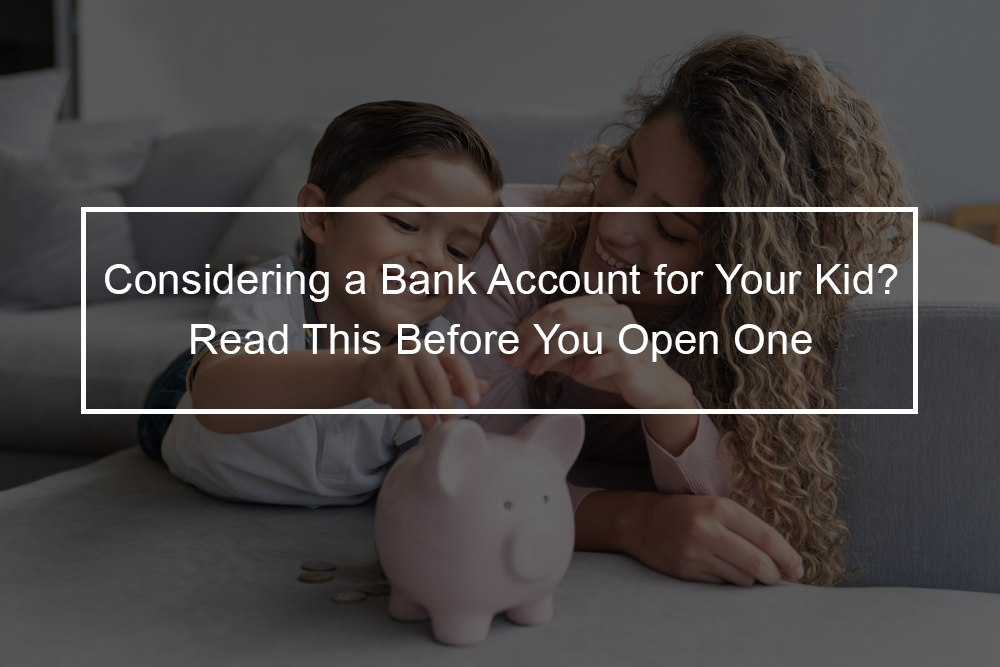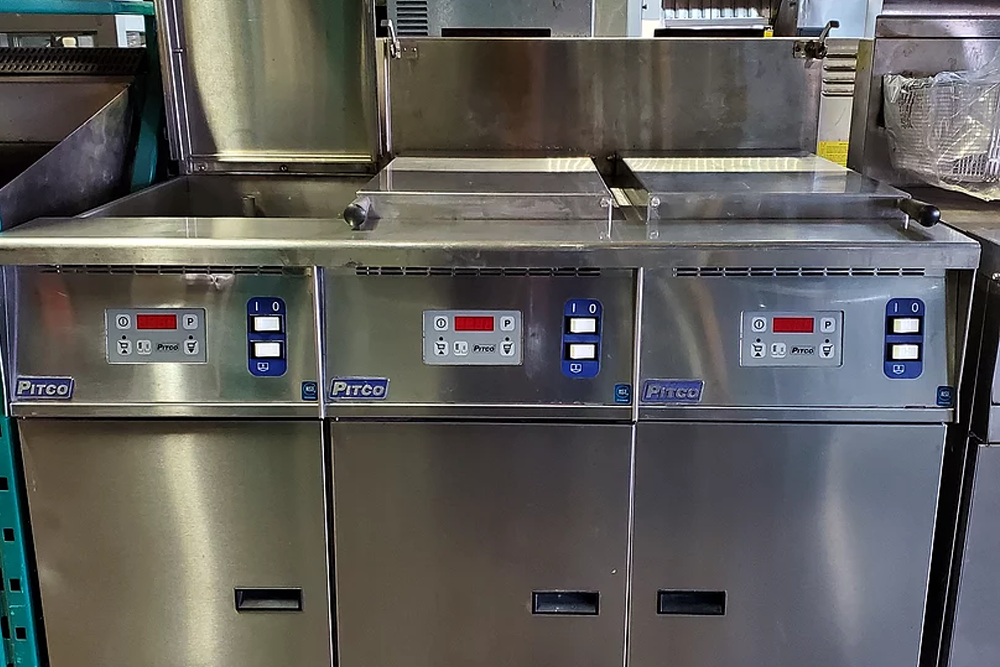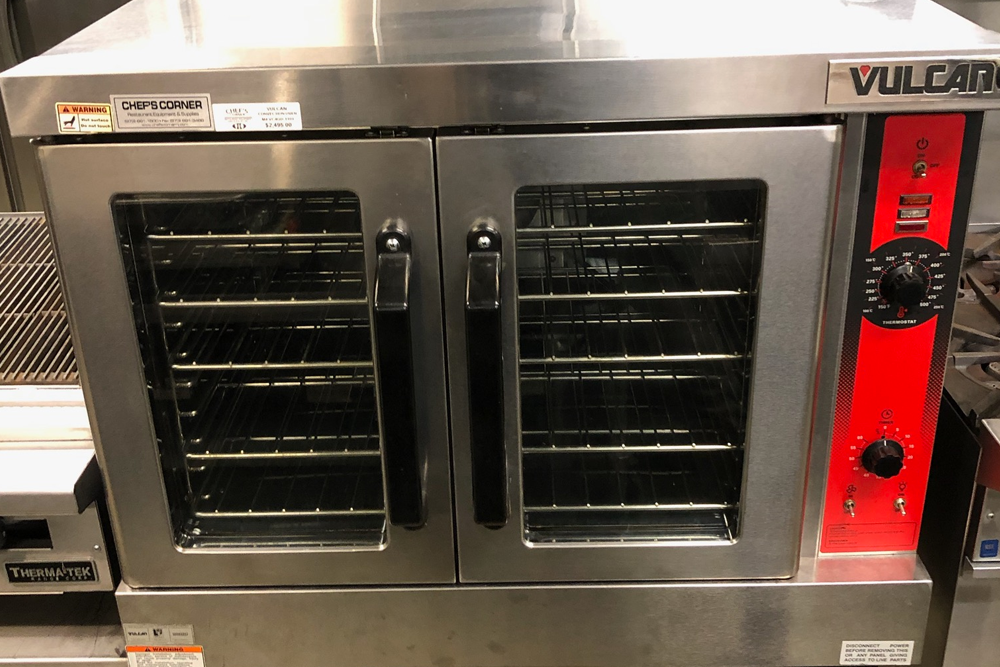
How do I open a bank account under 18?
While under eighteens can have a bank account in their name, an adult must create the account. So a guardian or a parent can create a joint checking or savings account with their kid.
Some accounts cater to younger children, while others are centered on teens. Different states and banks may also have regulations about the age of a minor on an account, so you will want to do your due diligence.
For the most part, you can create accounts online or in person. Bank criteria will vary; however, you typically need your child’s Social Security number, birth certificate, passport, and identifying information.
Things to consider when choosing a bank account for kids
Before you settle on an account, you will want to consider the following:
- Availability of add-ons (debit cards and checks)
- Initial deposit needed
- Monthly fee
- Daily balance requirement
- Service fee
- The interest rate for the savings accounts
Other elements may be significant to you, such as the ability to transfer money into your child’s account as often as you need to.
6 Best Savings Accounts for Kids
We stuck to savings and checking accounts at large banks with various locations around the US. Some accounts are called UTMAs, which means Uniform Transfers to Minors Act. In these kinds of accounts, gifts of high value (real estate, money, etc.) can be moved to a custodian for the advantage of a minor following the United States Social Security Administration, till the child becomes a legal adult. The savings are tax-free for the minor till they assume the account. However, the assets are regarded as part of the custodian’s estate and are taxed accordingly. Here are the best savings accounts for kids.
Bank of America child savings accounts
Bank of America provides two options for kids: a Custodial (UTMA) Savings Account and Minor Savings Account. With a Minor Savings Account, members under eighteen have full access to their money and can set up automatic transfers. FDIC insures the account.
In a Custodial Savings Account, minors cannot access funds before they are eighteen. Nonetheless, automatic transfers can still be organized, and FDIC also insures this account.
Minor Savings Account
The account is jointly owned by the child and their guardian or parent. The minimum initial deposit is $25, and the minimum daily balance is $0. The account does not have a monthly service fee for a child under 18, but after they turn eighteen, the account will be converted into a BoA Advantage Savings Account, where fees will apply.
Custodial Savings Account
The guardian or the parent acts as a custodian for the minor’s account. The minimum initial deposit is $100, and the minimum daily balance is $500. The monthly service fee is $8 per month if there is no minimum daily balance of $500,(if there is the fee waived).
Chase High School Checking
Chase offers a checking account for children in high school. While there are not many extras available, overdraft protection, or debit card options, it is a tremendous no-fee account for those just getting started. Also, you can sign up for a general savings account.
Chase High School Checking
The account is owned jointly by a child (13-17 years old) and their parent or guardian, and the account should be linked to their guardian’s or parent’s Chase account. At age 19, the account will become a Chase Total Checking account.
The minimum initial deposit for Chase High School Checking is $0, and it does not have a minimum daily balance. The monthly service fee is $0.
Besides, if your child is at least 17 and going to college, Chase is providing a $100 bonus for creating a new Chase College Checking account. Your teen can redeem the offer online and receive the money after following a few easy steps.
PNC Bank ‘S’ for Savings Account
This PNC savings account is a UTMA account, and it aims to assist children in learning about money via Sesam Street. The Sesame Street themed learning center is an interactive experience for children, who can learn about goal-setting, sharing, saving, and spending; and even receive money tips from gang and Elmo.
You can set up automated savings with this account, and it does not have a fee after the initial deposit.
PNC savings Account
For account ownership, the parent or guardian acts as a custodian for the minor’s account. The minimum initial deposit is $25, and the minimum daily balance is $0. The monthly service fee is $0 if the account holder is under 18.
Capital One Kids Savings Account
This is an easy, no-fee account from Capital One and offers a one-percent APY. You can develop automatic savings plans and savings objectives, so your kids can watch their balance grow.
Capital One Kids Savings
This account is jointly owned by the child and their parent or guardian. The minimum initial deposit is $0, which applies to minimum daily balance and monthly service fees.
TD student checking
TD Bank provides a checking account for those kids in ages 17 through 23. Members can make excessive use of this instant issue debit card, and parents can order a TD Go Reloadable Prepaid Visa Card to assist their student-age kids in spending responsibly.
Also, TD provides several online guides for personal finance education, from building your credit to using a budget worksheet.
TD Student Checking
A TD student checking account is owned jointly by a child and their guardian or parent. The minimum initial deposit is $0, and the minimum daily balance is also $0. The monthly service fee is $0 if you are under 18.
Wells Fargo way2Save savings account
This kids savings account offers free online transfers between Wells Fargo accounts and free online statements to assist teach minors about money management.
Wells Fargo Way2Save
In terms of account ownership, this account is owned jointly by UTMA or UGMA (Uniform Gifts to Minor Act) and by the minor. The minimum initial deposit is $25, and the minimum daily balance is $0. And the monthly service fee is $0 for members under 18 (19 in Alabama).
Why your kid should have a bank account?
It might be tempting to hold on to your children’s money in your account or allow them to keep it in a piggy bank. However, it is a good idea to open up a bank account for them for various reasons
- Assist kids in learning the value of money, from saving to spending it.
- Assist them in understanding compound interest and how it makes their money grow
- Assist them in learning to delay instant gratification by saving toward a goal.
- Another excellent reason for opening a bank account for your kid is to put his or her money in the bank to earn interest. Mainly, the child will get free cash as a reward for storing his money there.
- Opening an account is also an excellent way to teach and reinforce good budgeting habits.
Using a kid’s savings account as a learning tool
After you have opened an account, assist your kid in learning the best practices for managing money, such as setting aside a portion of his or her allowance and understanding the difference between long term and short term savings.
Start early enough, and your kid will be a guru by the time they turn eighteen. Your child does not need to be a teen with a part-time job as soon as he or she is old enough to recognize the basics and open an account.









